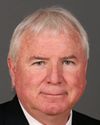Yes. I notice that in 349 of the 1,220 cases, the individuals concerned are between the ages of 17 and 25, but it does not say how many of them suffer from mental problems. This is the overall problem with your sample. Would we not have been interested in knowing that people in the 35- to 44-year-old age bracket, for instance, experience these symptoms most often, or in seeing data based on the gender and level of education of these individuals?
This list represents the 17- to 25-year-old age group that you interviewed during your study, but you do not tell us whether, given their profile, they are more likely to suffer from mental illness. Can we not find this information anywhere in the study?




